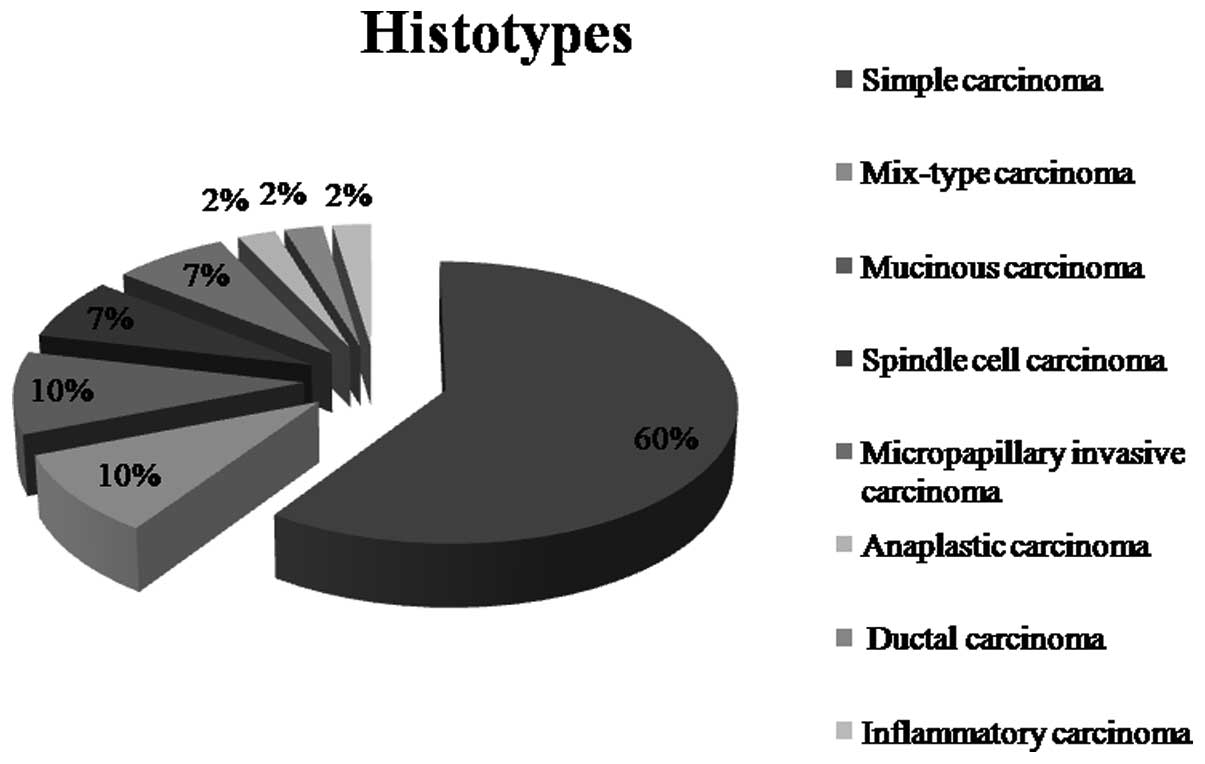Expression of vimentin filaments in canine malignant mammary gland tumors: A simulation of clinicopathological features of human breast cancer
- Authors:
- Published online on: July 8, 2014 https://doi.org/10.3892/br.2014.312
- Pages: 725-728
Metrics: Total
Views: 0 (Spandidos Publications: | PMC Statistics: )
Total PDF Downloads: 0 (Spandidos Publications: | PMC Statistics: )
Abstract
Canine malignant mammary gland tumors (CMMGTs) are the most common malignancies observed in females. Several biological similarities have been reported between CMMGTs and human breast cancer (HBC). The present study aimed to assess the correlation of vimentin filaments overexpression, as part of the process of epithelial‑mesenchymal transition (EMT) and the clinicopathological characteristics in CMMGTs. The clinicopathological characteristics of 42 CMMGTs were collected. Paraffin‑embedded blocks underwent immunohistochemistry staining, which was performed using vimentin (to assess the evolution of the EMT process), Ki‑67 (for evaluation of tumor proliferation) and cluster of differentiation 34 (CD34) (for evaluation of angiogenesis) antibodies. The tumor stage, grade, vascular invasion, margin status, rate of expression of the vimentin filaments, microvessel density‑CD34 and proliferation rate data were obtained. Finally, the association between the expression of the vimentin filaments and those parameters was resolved statistically. A significant association was shown between the overexpression of the vimentin filaments and tumor size (r=0.71, P=0.03), tumor grade (r=0.80, P=0.021), angiogenesis (r=0.57, P=0.043), proliferation coefficient (r=0.06, P=0.001) and vascular invasion (r=0.76, P=0.043). Vimentin overexpression did not statistically correlate with the tumor stage or the margin status. Similar to the findings of the present study, certain recent studies have indicated that vimentin filament expression in HBC and CMMGTs is associated with the severity of cancer. Thus, spontaneous canine mammary tumor models appear to be an appropriate animal model for breast cancer research, and the results of the present study could aid to reinforce the association.










